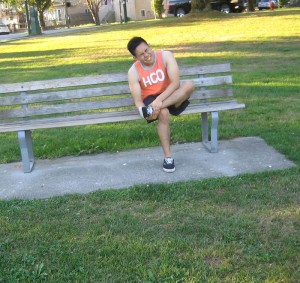Leg cramps are described as sudden uncontrolled contraction of the muscles. Children can experience discomfort caused by leg cramps especially during periods of rapid growth. Leg cramps causes severe pain and disrupts sleep especially when they happen at night.
The cramps can be severe when it affects small children. Overextension of the muscles of the leg or a pinched nerve while sleeping can cause leg cramps. The cramped muscles can be hard to the touch or evidently bulging. Cramping that occurs among children are usually triggered by excessive physical activity during the day.
Causes of leg cramps
- Performing high-intensity activities such as jumping and running or activities that are new to the child. The fibers of the muscle will form lactic acid as a waste product following an activity and microscopic tears develops once fibers of the muscles are stressed.
- Excessive perspiration can cause imbalance in the electrolyte balance and impaired regulation of temperature of the body can result to abnormal muscle responses.
Leg cramps are described as sudden uncontrolled contraction of the muscles. - Imbalances in the electrolytes
- Rapid growth of a child increases the incidence of leg cramps at age 12 with maximum incidence between the ages 16 and 18. The bones grow and changes in skeletal alignment needed for the muscles to grow, stretch and some bodily changes.
- A child with flat feet or other structural disorder of the leg can experience leg cramps due to imbalance of pressure placed upon the muscles of the leg.
- Conditions such as diabetes, anemia, hypoglycemia and thyroid can experience cramping as symptoms.
Treatment
- Perform stretching by holding the heel of the child on one hand and the toes in the next. Gently pull the heel of the child and push the toes up toward the leg. This stretch can help relieve muscle contraction in the calf. Remain in this position until the leg cramps subside.
- Massage the calf muscle while cramping. Gently stroke the cramping muscle using firm pressure by starting at the ankle and spread up towards the knee. Massage in this manner until the cramping is minimized. Once cramping is minimized, massage the affected muscle using a circular stroke. Wrap an ice pack in a towel and place on the affected muscle for at least 20-30 minutes to lessen the pain.
- Deficiencies in nutrition such as calcium, potassium and sodium can also cause leg cramps. Increase the consumption of calcium-rich foods such as milk, cheese, yogurt, tofu, almonds and oranges. Additionally, it is also recommended to add potassium-rich foods such as banana, potatoes, tuna, strawberries, carrots and lettuce. After performing strenuous physical activities, provide the child with sports drinks to help replace the lost electrolytes and sodium and also help in preventing leg cramps from developing.
- Drink coconut water regularly can also help in preventing leg cramps.
- Drink chamomile tea with a few drops of honey or agave syrup when cramping is happening. Take note that chamomile helps in relaxing the muscles and minimize the occurrence of the leg cramps.

